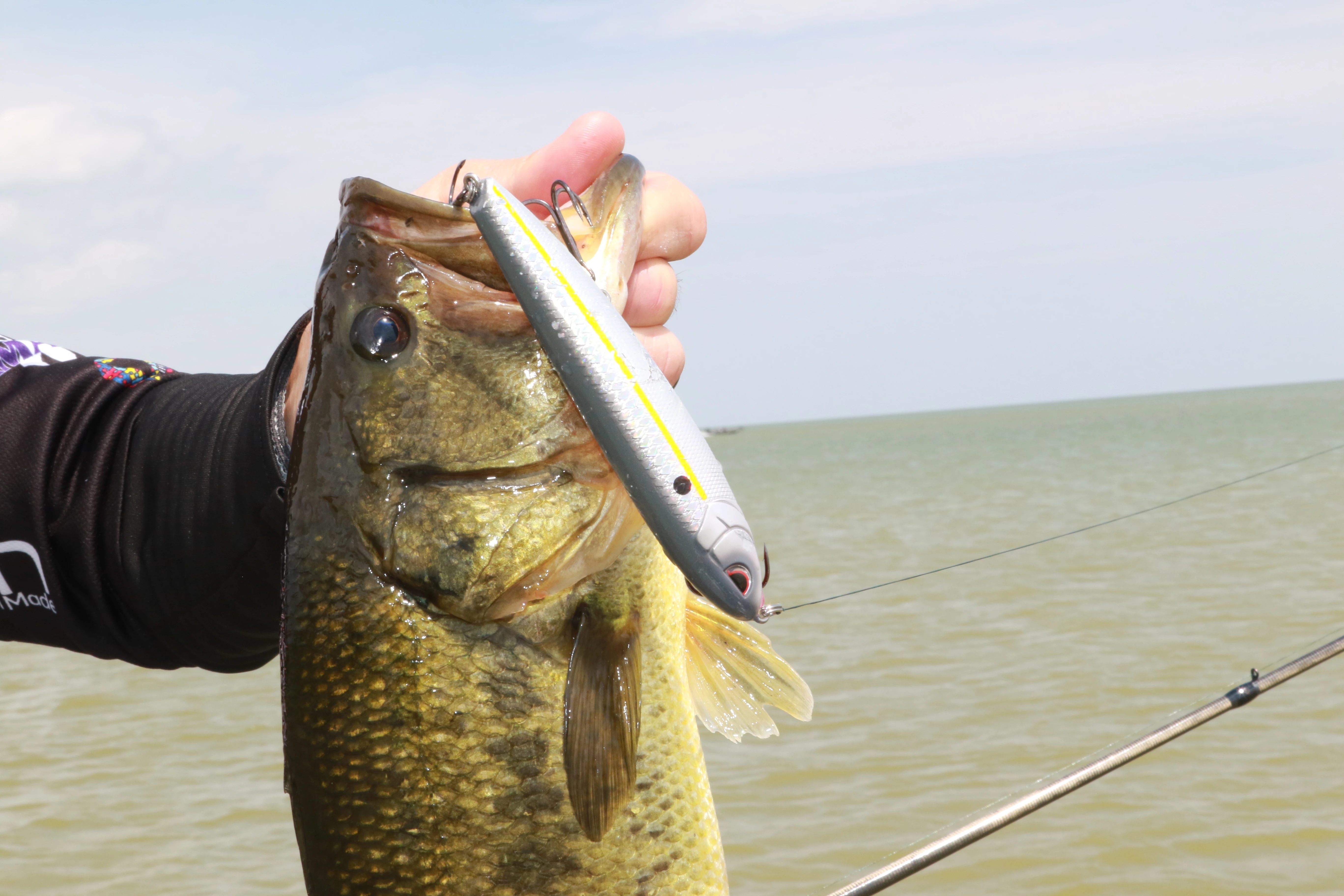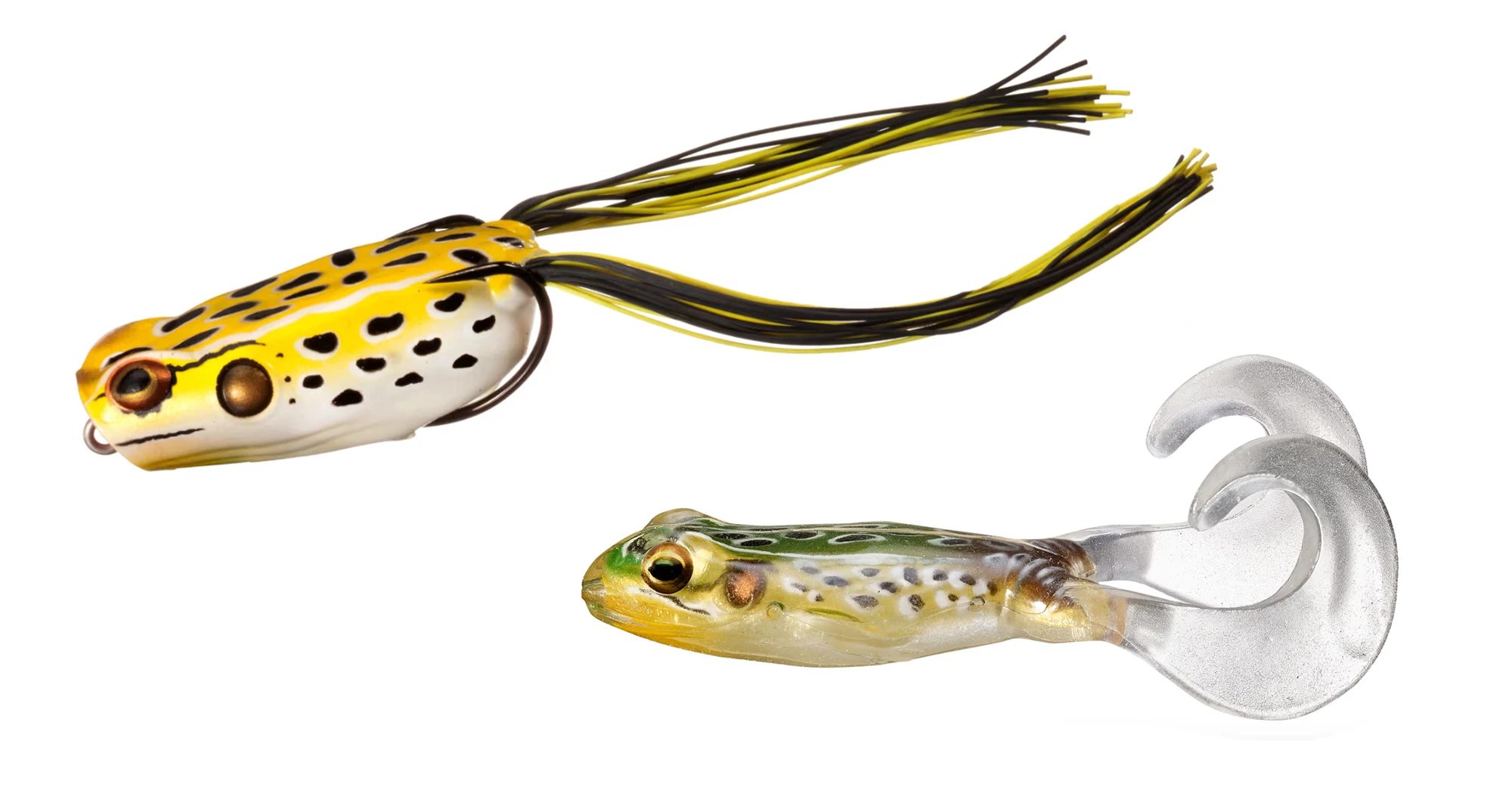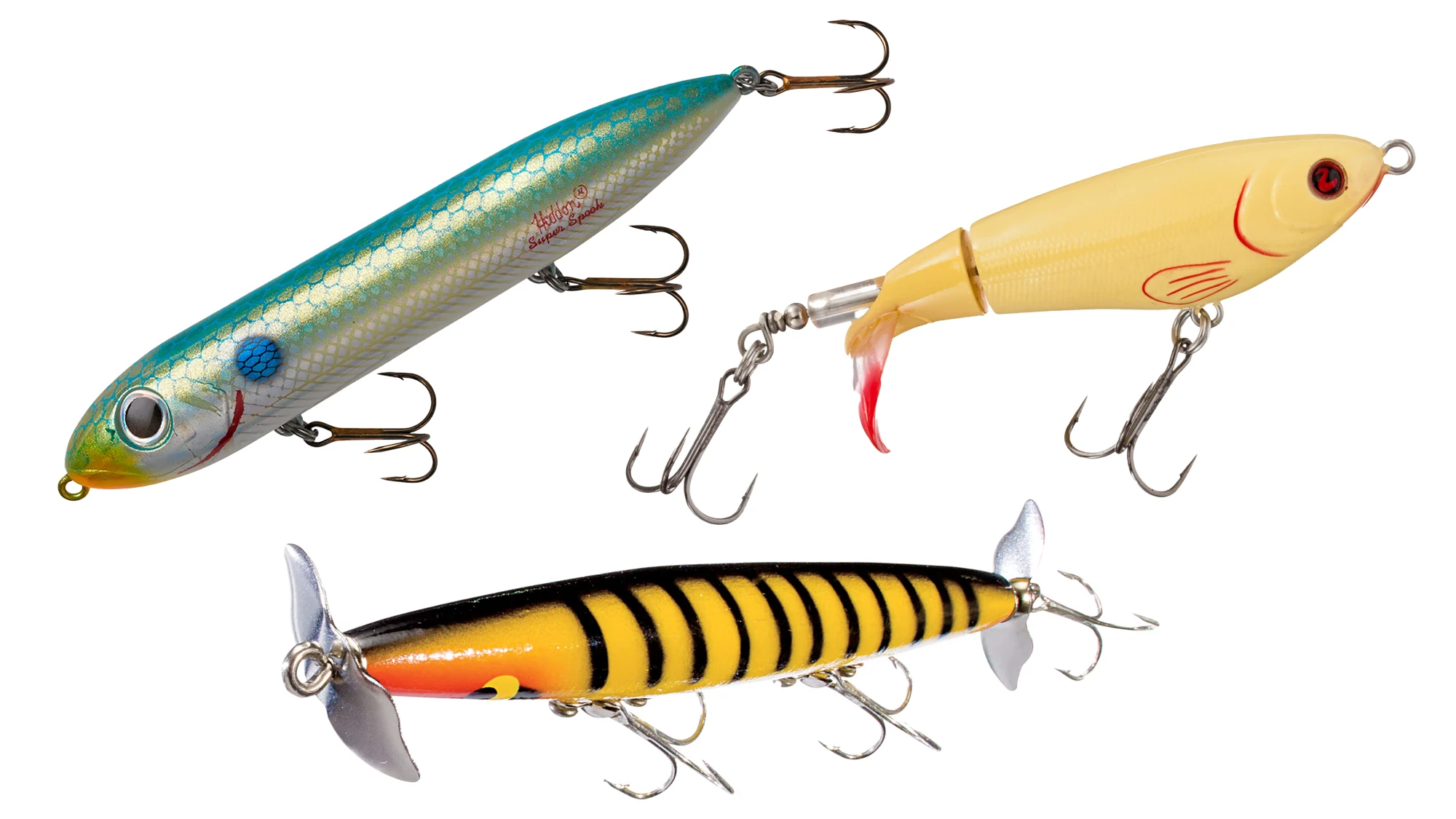Nothing thrills like a topwater bite, and whether you're fishing during the early morning feed or prospecting a midday shade pocket, the right topwater bait often tempts the biggest fish. The question is: What is the right topwater bait?
Knowing which lure to tie on for different conditions will go a long way toward watching more bass blow up on the surface. But even that is just half the battle. If you want to land those fish, you also need to know how to get them on the hook and keep them there until they're boat-side. With those to keys in mind, here's how to pick the right topwater bait, get more solid hookups, and make topwater bass fishing even more thrilling in the process.
How to Pick the Right Topwater Bait

When it comes to choosing topwater baits, picking the right tool for the job really comes down to the job site. Are you dealing with thick grass mats, open water, or something in between? Here's a breakdown of different cover conditions you're apt to encounter and which baits work best for each.
Dense Surface Vegetation
If you’re dealing with thick and weedy surface cover, whether it's grass mats or fields of lily pads, hollow body frogs are your best bet. Trimming frog legs tight to the body helps ensure hook-ups, as it brings the bite closer. Also, experiment with adding weights inside the frog's body to make is sit heavier on a grass mat; the deeper impression helps fish track and target the bait.
Related: 15 Ways to Catch More Bass with Frog Lures
Sparse Vegetation

When vegetation is a bit more sparse and you've got gaps and edges to target, a popping-style frog, like the Booyah Poppin' Pad Crasher, will grab plenty of attention. Just keep in mind that the narrower the bait's nose, the better it will navigate the patches of thick stuff.
Another good option for sparse cover (and/or open water) is a buzz toad rigged weedless on a wide-gap hook. Also, hybrid-type frog baits, such as LiveTarget's new Freestyle Frog employ that soft body, single-hook template, but their greater buoyancy allows you to pause the bait without immediate descent. Molded legs designed to flex and kick also create a realistic look.
Open Water

For open water, walking baits make great search tools that cover broad areas and instantly appeal to aggressive fish—especially in schooling scenarios. Poppers are best for targeted presentations like mayfly hatches, dock edges, and submerged structure. Long, narrow, pencil poppers blend the best of both.
If the side-to-side saunter of a walking bait isn’t working, spice up the look with a plopper-style bait, which features a rotating back section built with an inward angled fin that catches water. Another good option for covering water is buzzbait, fished with a skirt or naked with a toad trailer.
Finally, keep a prop bait in your arsenal for open water, as the twin blades, fore and aft, create a sputtering commotion that can push reluctant fish over the edge. Experiment with subtle blade adjustments—bending inward, outward, or perfectly straight—for different sputters.
Related: The 25 Best Topwater Bass Lures of All Time
How to Stick the Landing with Topwater Bass

One of the most common frustrations of topwater fishing is to have a big bass blow up on your surface bait only for you to come up empty when you try to set the hook. Well, take heart, because there are several things you can do improve your hook-up rate.
Change the Hooks
Without a solid bite, stock treble hooks can fail to snare your fish, so try retrofitting your baits with super-sharp, round-bend trebles to increase the likelihood of solid connection. If you're drifting dead grass or if the subsurface tips threaten frequent treble hook snags, switch the bait’s stock hooks for inline single hooks, with the front hook facing forward and the rear hook facing aft.
Also, with prop baits, you can vary hook sizes to get a horizontal or tail-down posture. Often, the fish will respond better to a particular look/action.
Add a Tail Gunner
Even a properly worked topwater walker or popper might fail to convince a picky fish enough for a solid bite, but a simple modification can close the deal. Adding a dressed (feathered) treble to the rear position enhances the bait with lifelike pulsation. Another option is to replace the rear treble with a 6- to 8-inch segment of 12-pound fluorocarbon leader and a white or chartreuse bead-chain fly.
Take a Second Shot
If a bass misses your topwater, an immediate follow-up cast with the same or a different bait can trigger a fish that was clearly aggressive enough to make its move. When your frog lure draws a short strike or the vegetation mars the effort, for example, firing a heavily weighted creature bait, craw, or stick worm through the cover often convinces a fence rider.
For open-water hard bait misses, downsizing often helps. So if they’re sniffing that full-size, 3-hook walker, drop down to a smaller, 2-hook model.
Think Small

While we are on the topic of downsizing, any time your hollow-body frog is producing tentative bites or not moving fish like it should, try going smaller. Most brands offer at least two sizes of the same model frog, but if the bite becomes tough—midday slump, heavy pressure, or tiny baitfish flooding shallow vegetation—don’t hesitate to downsize.
Swap your usual topwater baitcasting gear for a medium-heavy spinning outfit spooled with 20-pound braid and tie on a tiny frog like the Spro Bronzeye Pop 40 (1.57 inches, 1/5 ounce). This is less about reaching far back into grass mats and more about probing the edges, holes, and smaller weed clumps in sneaky little pockets. Just don’t drop your guard; a small bait does not imply small fish.
Read Next: Best Bass Lures for 2024

